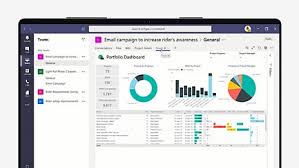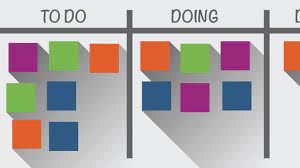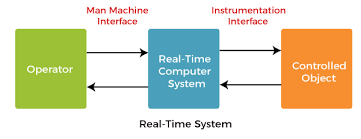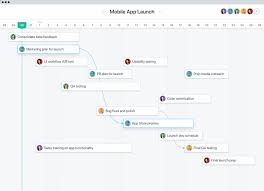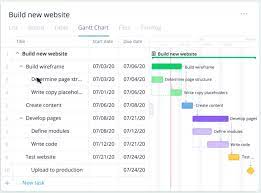Mastering Project Management with Zoho Projects: A Comprehensive Solution for Teams
Exploring Zoho Projects: A Comprehensive Project Management Solution
Zoho Projects is a versatile and intuitive project management software that caters to the needs of teams and businesses of all sizes. With a wide range of features and tools, Zoho Projects streamlines project planning, tracking, collaboration, and reporting, making it an indispensable tool for efficient project management.
Key Features of Zoho Projects:
- Task Management: Create tasks, set dependencies, assign responsibilities, and track progress in real-time.
- Collaboration: Foster teamwork with features like chat, forums, document sharing, and project feeds.
- Gantt Charts: Visualise project timelines and dependencies with interactive Gantt charts.
- Time Tracking: Monitor time spent on tasks and projects for accurate billing and resource allocation.
- Budgeting: Set budgets for projects, track expenses, and generate financial reports for better financial management.
Benefits of Using Zoho Projects:
Zoho Projects offers numerous benefits to users looking to streamline their project management processes:
- Increased Efficiency: Centralise project information, communication, and tasks in one platform for improved efficiency.
- Better Collaboration: Facilitate seamless collaboration among team members regardless of their location or time zone.
- Data Security: Ensure data security with robust encryption protocols and secure access controls.
- Cross-Platform Compatibility: Access Zoho Projects from any device or browser for on-the-go project management.
Zoho Projects Pricing:
Zoho Projects offers flexible pricing plans to suit the needs of different users. From free plans for small teams to enterprise-level solutions with advanced features, there is a pricing option for every budget. Users can also opt for a free trial to experience the full capabilities of Zoho Projects before committing to a subscription.
In Conclusion
Zoho Projects is a comprehensive project management solution that empowers teams to plan, execute, and deliver projects efficiently. With its user-friendly interface, robust features, and affordable pricing options, Zoho Projects is an ideal choice for businesses looking to enhance their project management capabilities. Try Zoho Projects today and experience the difference it can make in your projects!
Top 8 Tips for Maximising Efficiency with Zoho Projects
- Utilize the Gantt chart feature to visually track project progress.
- Set up milestones to mark significant project stages or goals.
- Use task dependencies to ensure tasks are completed in the correct order.
- Collaborate with team members by assigning tasks and setting priorities.
- Monitor project expenses and budgets using the financial tools available.
- Generate detailed reports to analyse project performance and identify areas for improvement.
- Integrate Zoho Projects with other Zoho apps for seamless workflow management.
- Take advantage of the mobile app for on-the-go access to your projects.
Utilize the Gantt chart feature to visually track project progress.
Utilising the Gantt chart feature in Zoho Projects allows users to visually track project progress with ease and precision. By mapping out tasks, timelines, and dependencies in a clear and interactive format, teams can quickly identify bottlenecks, adjust schedules, and ensure that projects stay on track. The visual representation provided by the Gantt chart feature enhances project planning and monitoring, making it an invaluable tool for effective project management within Zoho Projects.
Set up milestones to mark significant project stages or goals.
In Zoho Projects, setting up milestones is a valuable tip to mark significant stages or goals within a project. Milestones serve as key checkpoints that help teams track progress, celebrate achievements, and stay focused on important project objectives. By defining clear milestones in Zoho Projects, teams can effectively monitor their project’s advancement, ensure timely completion of critical tasks, and maintain alignment with overall project goals. This strategic approach enhances project visibility, facilitates better planning, and motivates team members to work towards accomplishing key milestones successfully.
Use task dependencies to ensure tasks are completed in the correct order.
In Zoho Projects, utilising task dependencies is a valuable tip to ensure that tasks are completed in the correct order. By setting up dependencies between tasks, you can establish a logical sequence for their execution, ensuring that each task is completed before its dependent tasks can begin. This feature helps in maintaining project timelines, avoiding bottlenecks, and enhancing overall project efficiency by enforcing a structured workflow that promotes smooth progression from one task to the next.
Collaborate with team members by assigning tasks and setting priorities.
In Zoho Projects, effective collaboration is key to project success. By assigning tasks and setting priorities, team members can streamline their workflow, ensure clarity on responsibilities, and maximise productivity. Assigning tasks allows for clear delegation of work, while setting priorities helps team members focus on the most critical aspects of the project. With these features in Zoho Projects, teams can work together seamlessly towards achieving their project goals efficiently and effectively.
Monitor project expenses and budgets using the financial tools available.
To ensure the financial health of your projects, it is essential to monitor project expenses and budgets diligently using the financial tools available in Zoho Projects. By leveraging these tools, you can track costs, allocate resources efficiently, and generate insightful reports that provide a clear overview of your project’s financial status. This proactive approach not only helps in controlling expenses but also enables better decision-making to keep your projects on track and within budget constraints.
Generate detailed reports to analyse project performance and identify areas for improvement.
By utilising the feature of generating detailed reports in Zoho Projects, users can gain valuable insights into project performance metrics and identify areas for improvement. These reports offer a comprehensive overview of project progress, resource allocation, task completion rates, and budget adherence. By analysing this data, teams can make informed decisions, track key performance indicators, and enhance project efficiency. Identifying trends and patterns from these reports enables teams to proactively address challenges, optimise workflows, and drive continuous improvement in their projects.
Integrate Zoho Projects with other Zoho apps for seamless workflow management.
Integrating Zoho Projects with other Zoho apps offers a seamless solution for workflow management. By connecting Zoho Projects with applications like Zoho CRM, Zoho Analytics, and Zoho Desk, teams can streamline their processes, enhance collaboration, and improve productivity. This integration allows for the seamless transfer of data between different platforms, ensuring that information is up-to-date and accessible across all tools. By leveraging the power of interconnected Zoho apps, users can create a cohesive ecosystem that optimises their workflow and maximises efficiency.
Take advantage of the mobile app for on-the-go access to your projects.
Maximise the utility of Zoho Projects by utilising the mobile app, which provides convenient access to your projects while on the move. With the mobile app, you can stay connected to your tasks, collaborate with team members, and track project progress from anywhere, ensuring seamless project management even when you are away from your desk. Embrace the flexibility and accessibility offered by the Zoho Projects mobile app to enhance productivity and efficiency in managing your projects on-the-go.




